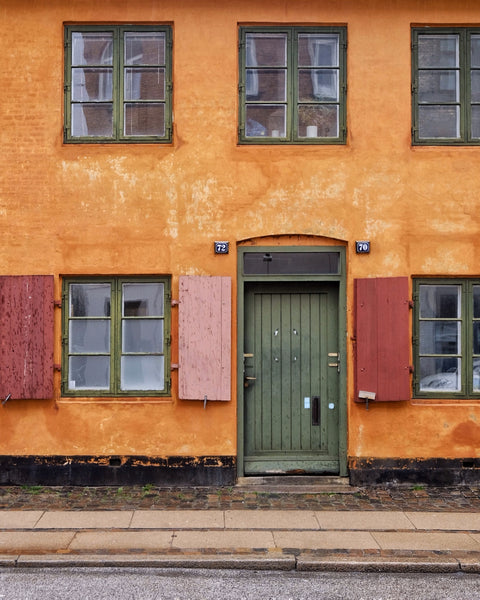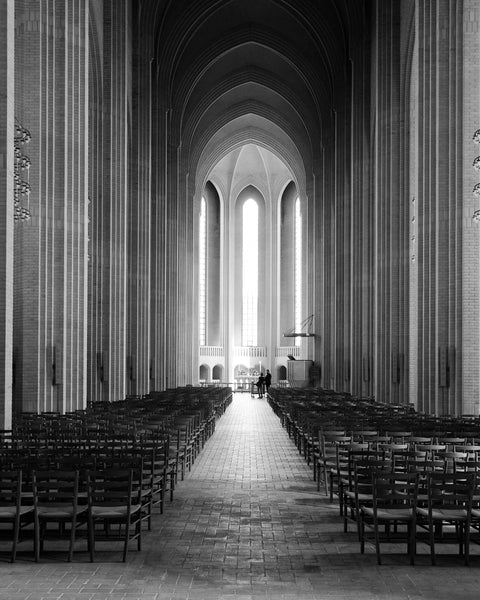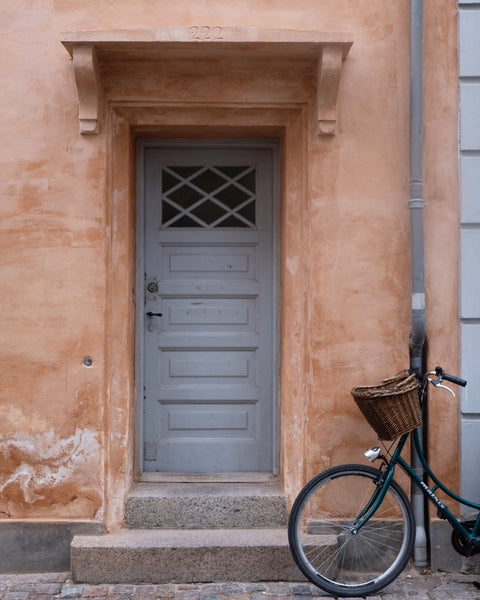WeEatLove and Scandinavia with Fikret Kuşadalı
We talked to WeEatLove 's architect Fikret Kuşadalı about Scandinavia, which he and vitruta have in common.
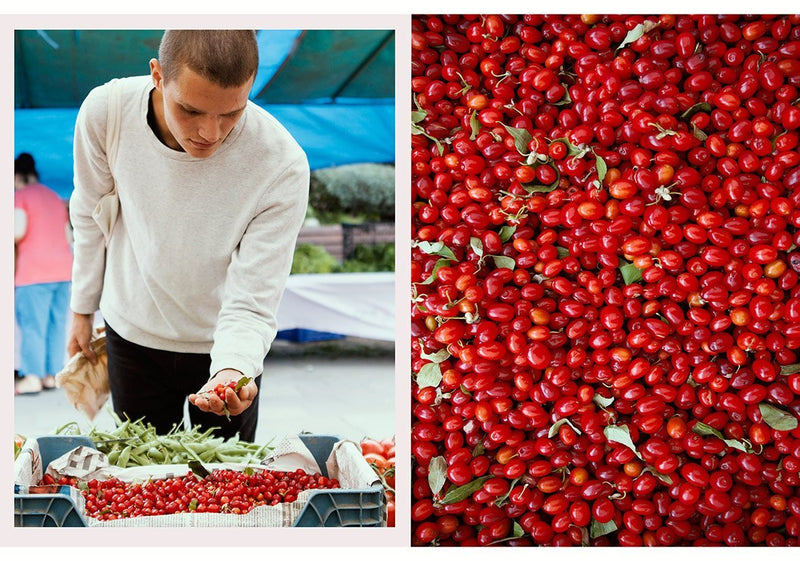
Can you tell us the story of WeEatLove ?
For this, I need to go back to my student life a little bit. Even though I moved to Istanbul to start my education at the Faculty of Architecture, I always knew that I would do something related to the kitchen. Since I took my first step into the kitchen when I was not even tall enough to reach the counter, I was sure that something would attract me to the kitchen. I think that growing up on a farm, being able to reach fig branches from the terrace of our house, and being a part of all agricultural / animal production are the basic things that make me the person I am today. After having such a childhood, many things in Istanbul seem very artificial to you. You understand more the value of ingredients that are very easy for you to access, and this is actually enough reason for you to turn to the kitchen.
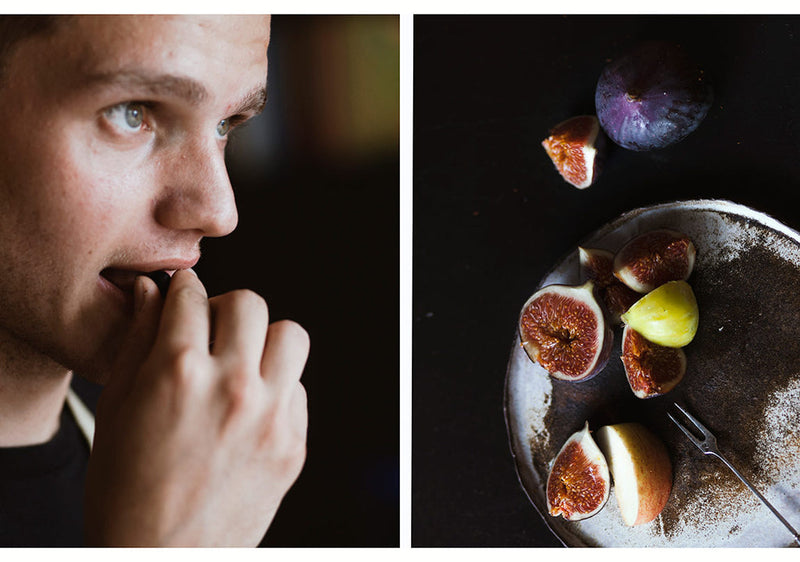
Istanbul is a big city, a disadvantage of which is that access to good materials is difficult. My interest in the kitchen actually grew for this reason. But how can I actually work in a kitchen? I had no idea about this. During this time, I improved myself in photography and video production with the help of the courses I took at university and the people I met. I started creating stories by photographing the meals I cooked and the kitchens I visited. I had the opportunity to expand my work for several independent publications. During this period, my works were published in publications such as Kein Magazine, Matchup Mag, Klokmag, Callingmag, Bizzarre, Orta Format. This period was a period that improved me in terms of photography. I directed the momentum I gained from here to the kitchen and, somewhat by chance, found myself working in a bakery. I progressed quickly thanks to the fact that it is a largely experimental kitchen and we try many new recipes every day. On the other hand, I continued to archive and photograph the productions I made here on we.eatlove and share the recipes I tried with people. I'm talking about 5-6 years ago, during this period, with the sudden rise of social media, Instagram turned into a very productive communication network for me. The people I met where I worked made up the majority of my follower base. As I changed kitchens, they continued to follow me and come to the places I worked. I spent these years working in small bakeries that mainly produced artisan cakes and sourdough bread.
If you work in the kitchen, your job becomes your whole life. You can't have a day off, at least it was for me. There were periods when I never (really never) left the kitchen for 3-4 days. During this time, I stopped producing content for my blog and Instagram. However, after a while, I realized that this way of working did not nourish me enough. You need to constantly try new recipes, taste new things produced in the city, research and most importantly travel. This is not easy to do when you work in a kitchen with great responsibilities. For this reason, I decided to make my productions from my own kitchen. And we.eatlove has turned into a kitchen that makes experimental productions and also provides catering services. I must say that this process developed spontaneously, without planning.
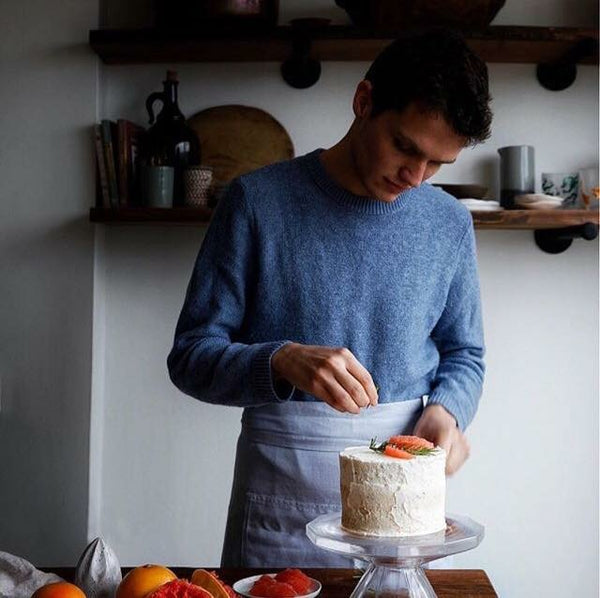
The biggest plus of this change is that I now have plenty of time to tell people about the work I produce. I took more photos, cooked for my friends, brought together people I didn't know and cooked meals. I met more people. And more importantly, I had the chance to travel again after a long time. After stepping into the kitchen, the culture that impressed me the most was Scandinavia. That's why the first place I traveled to was Norway. Later, I also had the chance to visit Sweden and Denmark. I can say that these were the most inspiring periods of my career.
-You work as a consultant for vitruta in different business areas such as social media, cafe, and in-store visual editing. In fact, can we say that this is an indicator of the diversity you have achieved in we.eatlove?
In fact, it is a situation that has an impact on my entire life. You undergo an extremely interdisciplinary education at the Faculty of Architecture. You work with people around you who have developed themselves in many different fields and are experts in their fields. It is impossible not to be impressed by these people. As a result of this, you can improve yourself in different business areas at the same time. From this perspective, vitruta was a work environment for me where I could use my different talents together for the first time in my career and where I felt truly comfortable. Since We.eatlove is a work that I have produced entirely by myself, this diversity makes me happy there as well.
-You have a completely different passion for Scandinavia. Where does this passion come from and how does it affect you?
My travels have a huge impact on every aspect of my life. I guess meeting the places I experience and different cultures in general is very impressive for everyone. So at least for me. When I look at it from a food stylist perspective, meeting around a table with people from a culture you are unfamiliar with has a lot to teach you. For this reason, I always try to make plans where I can spend time with local people during my travels. At the same time, every society observes the geography they live in in a completely different way, and when you return to your daily life after encountering these differences, you actually start to notice the changes in yourself. This process seems very exciting to me. In summary, I can say that after returning from the trip, I actually saw the changes in myself and was inspired.
Among the places I have traveled to, the region that impressed me the most and that I travel to most frequently is Scandinavia. Copenhagen and Stockholm are impressive cities in terms of design. At the same time, I can say that I generally find Scandinavian cities peaceful, even though the weather can sometimes be misleading. However, I have to say that my passion for Scandinavia was formed mostly after my experiences in the kitchen. In general, they have become very popular in fields such as design and architecture, it is possible to have astonishing experiences with Scandinavian designs. But for me, even one Cardamom Bun was more than enough. Last year, I had the opportunity to work in a bakery in Copenhagen for a short time, which was a very important experience for me. It is priceless to learn about the donuts that I admire so much.
Eating and drinking habits in general, especially Fika culture. Fika was also our biggest inspiration when designing the cafe section of vitruta. Fika, simply put, is the name given to the small snack consumed between meals. However, it is more than just a definition, it is a culture, you can easily understand from here how much the Swedes love drinking coffee and small snacks. We all need to get away from the hustle and bustle of our daily lives from time to time. Fika is a great way to do this!
-You took a 10-day trip to Denmark and Iceland in the past weeks. We're sure you have a lot to tell, but let's ask about Copenhagen first, if you wish; how was it? 🙂 and what/where were there things that made you say, “Those who love vitruta will definitely love these”?
There are an endless number of designer shops in Copenhagen, each more impressive than the other. That's why I can say that it is a paradise for vitruta lovers. Frama, Legends, Acne Studios & Acne Archive, Hay Design House, Boii Store are our favorite shops. We also had the chance to visit shops whose products we could not find in Istanbul. Copenhagen is very inspiring with its diversity in this field. It is also possible to find very interesting things in the small secondhand shops in the back streets of Norrebro. On our way back, we filled our suitcases from here.
The places I would recommend in terms of food and drink are breakfast at Atelier September, coffee at Coffee Collective (especially coffee kombucha should definitely be tried), Slurp Ramen Joint for those who love Far Eastern cuisine, or Baest for Italian cuisine. There are places to drink good beer all over the city. Although it is expensive compared to the rest of Europe, people in Copenhagen like to go out to eat and drink. For this reason, there are many alternatives and it is almost difficult to find something tasteless. There is at least one very good bakery in every neighborhood. I usually visit all of them. I can say that Hart Bageri, The Juno Bakery & Democratif Coffee Bar are the three best options.
Apart from these, it is also very enjoyable to visit the Louisiana Museum of Modern Art or the SMK Museum or Botanical Garden in the center of the city and spend a quiet day.
-What route did you follow for Iceland?
After spending a few days in Copenhagen, we went to Iceland. The advice everyone gives before going to Iceland: 'Rent a car, explore the island yourself!' happened.
However, we could not rent a car, and since the weather conditions were not very reliable, it did not seem possible to us. For this reason, we spent 3 days touring the southern part of the island with different tours. We stayed in Reykjavik for 6 days in total, which was quite comfortable for us as we wanted to see places close to the capital.
-What is the thing you remember most about Iceland?
Iceland is truly like no other place on earth. I thought it would be much more similar to Scandinavia. Although Reykjavik resembles Norway in terms of architecture, it is actually very different. As can be expected from the total population of the island (350,000) and the larger sheep population, the city is very small. New tourism has strengthened its place in the economy here, so you can feel that there is a complete change in Reykjavik. Since almost everything is imported to the island, eating and drinking alternatives are very limited, and there are no delicious options as good as Copenhagen. But we still tried things that should definitely be tried. These are things you will never want to eat again, like Rotten Shark (fermented shark) or Harðifiskur (dried fish chips).
For people who are used to focusing on food and drink while traveling, remind yourself: You actually came to Iceland not for food and drink, but to explore its nature.
The topography of the island is quite impressive as there are many active volcanoes on the island. Due to volcanic eruptions, the beaches are very different from what we know, especially the south of the island is surrounded by these black beaches. Apart from this, we had the chance to visit different formations such as glacier, geysir and lagoon. Most of the energy, heating and electricity on the island is actually provided by these underground hot water sources. Swimming in the pools formed by these hot springs has been one of the most impressive things in my life. We visited one of the oldest: Secret Lagoon.
